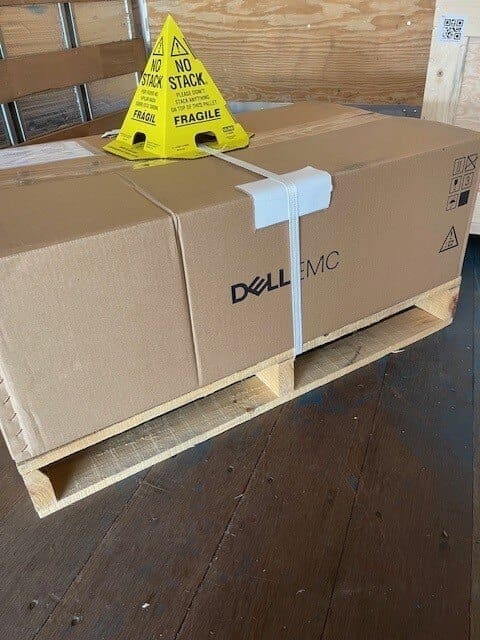Palletized goods are at the heart of many logistics operations, providing a systematic and efficient way to transport and store products. Whether you’re running a bustling warehouse or managing streamlined deliveries, understanding the importance of proper handling and storage of goods on pallets can significantly impact safety, efficiency, and overall productivity.
Below, we explore best practices and strategies that help ensure every pallet remains secure and your operations run smoothly.
Understanding Palletized Goods
Pallets serve as sturdy platforms that make the movement of goods more manageable—supporting smooth shipping, stacking, and storing. These wooden or plastic bases enable forklifts and pallet jacks to move larger quantities of items swiftly, reducing the manual labor required in busy warehouses.
A significant number of warehouse injuries stem from improper material handling. By leveraging pallets correctly, businesses minimize the risk of accidents associated with manually lifting or shifting heavy cargo.
The effective use of pallets also reduces product damage. Products stacked neatly and secured on solid pallets are much less prone to shifting or crushing during transit. This approach maintains the integrity of goods, leading to fewer returns and a higher degree of customer satisfaction.
Knowing the Importance of Safe Handling
Safe handling of palletized goods goes beyond just lifting and moving. It’s about preserving workplace safety, maintaining product quality, and reducing operations downtime.
Forklift and pallet jack operators, for instance, should be trained to gauge the weight distribution of loads. The Occupational Safety and Health Administration emphasizes properly maintained equipment, correct lifting angles, and adherence to load capacity limits. When operators respect weight constraints and check the stability of each pallet, they help prevent tipping incidents and potential injuries.
Additionally, stable stacking practices further safeguard workers. Ensuring goods are stacked evenly, using stretch wrap or banding, and maintaining uniform load edges keep products from toppling over—an essential step, especially in vertically oriented storage systems.
Maintaining Safe Warehousing Environments
Warehouses experiencing high-volume turnover need clear protocols for handling and storing pallets. Labeling aisles and designating safe forklift travel routes reduce collisions and confusion. A well-lit environment is equally crucial to spot potential tripping hazards and ensure drivers can see stacked pallets from a distance.
Aisle Width Management
Overcrowded aisles can result in collisions or scraping of product loads. Ensuring pathways have ample space for both forklifts and pedestrians can reduce the likelihood of errors.
Ventilation and Temperature Control
Some products, such as food or pharmaceutical items, may require specific climates. Keeping humidity and temperature levels in check helps retain product quality and prevents mold or spoilage.
Systematic Rotation of Inventory
Adhering to first-in, first-out (FIFO) or other rotation policies avoids stockpiling older items in less accessible areas. This process can be streamlined with the help of warehouse management systems that track and alert staff on required rotations.
Having Ongoing Training
Knowledgeable employees are key to preventing mistakes that could lead to accidents or damaged goods. Regular refresher courses, drills, and real-time demonstrations all reinforce proper techniques. Training might cover:
- Identifying damaged pallets: Employees should be trained to detect compromised pallets—cracks in the wood, protruding nails, or weakened joints—before loading any items. Damaged pallets can collapse even under standard loads.
- Confirming load limits: Different pallets have different capacities. Ensuring staff know precisely what each pallet type can handle mitigates risk.
- Having personal protective equipment (PPE): Requirements vary by warehouse, but consistent policies on safety footwear, high-visibility vests, and protective gloves contribute to a safer environment.
Professional certifications from credible bodies, such as the International Warehouse Logistics Association (IWLA), enrich the team’s expertise while instilling a culture of safety and efficiency.
Leveraging Technology for Pallet Management
Modern technology can optimize pallet handling in several ways:
- Warehouse management systems (WMS): These systems facilitate real-time tracking of pallet locations, ensuring swift retrieval and updating operators on stock levels.
- Barcode and RFID scanning: When pallets are labeled, scanning technology helps minimize manual errors. The ability to scan a pallet’s contents and update records automatically enhances accuracy.
- Sensor-enabled forklifts: Some advanced forklifts include sensors that detect height clearances and brake automatically when an obstacle is detected, reducing collision risks.
By integrating tech solutions, operations become more transparent, and businesses gain actionable insights into the flow of goods.
Putting In Quality Checks and Inspections
Routine inspections are vital to keep a busy warehouse running safely. Develop a schedule for checking both loaded and empty pallets. If pallets are left empty on racks or floors for long periods, they may deteriorate unnoticed. Look out for the following:
- Surface cleanliness: Keep pallets free of spills or debris to prevent contamination and slippage.
- Structural integrity: Ensure there are no loose boards, protruding nails, or warped surfaces.
- Proper load restraints: Confirm that stretch wrap or other restraints are securely in place and show no signs of tearing.
These regular evaluations foster an environment where workers naturally prioritize spotting and reporting issues early.
Building a Culture of Safety and Efficiency
A strong, safety-oriented culture reduces accidents, raises morale, and reinforces customer trust. Encourage open communication so workers feel comfortable reporting near-misses and potential risks. Leaders who reward consistent adherence to safety protocols help instill positive habits that become second nature.
Collaborative efforts among employees, managers, and safety personnel can result in innovative solutions to everyday challenges. By involving the entire team in safety discussions, you create a shared responsibility for preserving the integrity of palletized goods, the well-being of staff, and the satisfaction of your customers.
Creating a Path to Effective Pallet Storage
Storing palletized goods involves organizing racks to accommodate the maximum possible loads without overextension. This often calls for a tiered structure: heavier loads on lower racks and lighter ones on top. Many warehouses use standardized sizes to simplify racking configurations and forklift operations. Aligning pallet dimensions to storage racks supports straightforward loading and retrieval, reducing time spent adjusting or restacking goods.
Remember that the layout of your warehouse can evolve as seasonal demands shift or as products change. Regularly reviewing floor plans and storage capacity helps you stay one step ahead of changes in inventory volumes and product mixes.
Taking the Next Steps for Optimal Warehouse Operations
From using pallets that can handle the appropriate load to adopting new technologies, safe handling and storage practices underpin the success of any business dealing with palletized goods. Maintaining a workforce trained in proper lifting techniques, keeping storage areas tidy, and investing in modern equipment all go a long way toward averting injuries and preventing product damage.
If you would like to learn more about how we implement these practices at NorthStar Courier, or if you’re interested in our range of logistics services, contact us or explore the other pages on our website to discover how we can enhance your supply chain efficiency. Each step taken toward safer practices fosters a stronger, more reliable operation—one pallet at a time.




